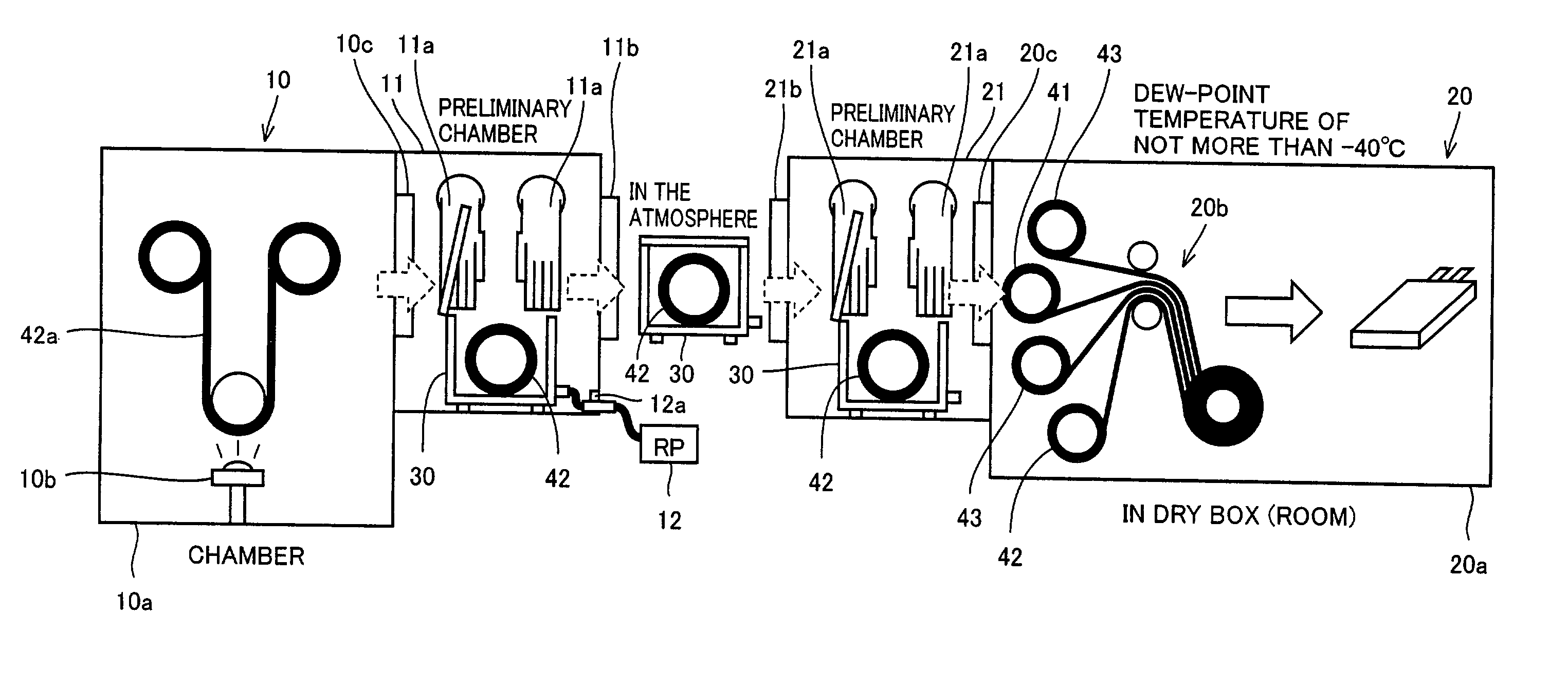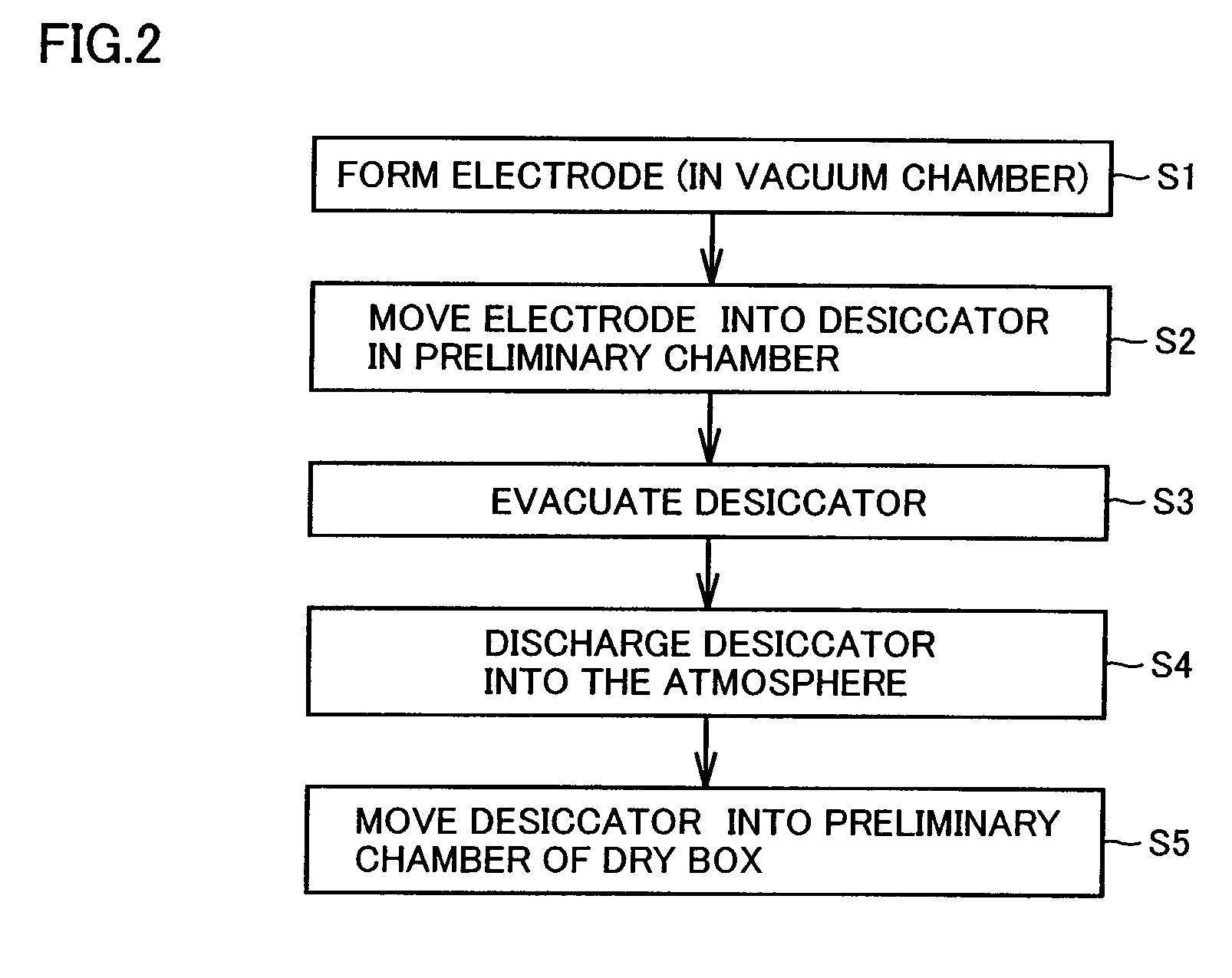Method of and apparatus for manufacturing lithium secondary cell
a secondary cell and lithium technology, applied in the direction of cell components, nanobatteries, sustainable manufacturing/processing, etc., can solve the problems of disadvantageous dendrite deposited on the negative electrode, disadvantageous inner shorting, and disadvantageous oxidation of the active material layer on the surface of the active material layer,
- Summary
- Abstract
- Description
- Claims
- Application Information
AI Technical Summary
Benefits of technology
Problems solved by technology
Method used
Image
Examples
example 1
[0048][Preparation of Negative Electrode]
[0049]FIG. 2 is a flow chart for schematically illustrating the procedure of preparing a negative electrode in Example 1. The method of preparing the electrode (negative electrode) according to Example 1 is now described with reference to the flow chart shown in FIG. 2. An electrode 42 is formed in the vacuum chamber 10a at a step S1, and thereafter moved into the desiccator 30 in the preliminary chamber 11 at a step S2. The desiccator 30 is evacuated through the rotary pump 12, to be decompressed to 10 Pa. Thereafter the desiccator 30 is discharged into the atmosphere at a step S4. The desiccator 30 is moved into the preliminary chamber 21 of the dry box 20a at a step S5. Thereafter the cell is prepared with the electrode (negative electrode) 42 in the dry boxy 20a.
[0050]The method of preparing the negative electrode 42 according to Example 1 is now described in detail. First, the sputtering apparatus 10 was employed for depositing an amorp...
example 2
[0055]According to Example 2, an electrode (negative electrode) 42 was prepared under conditions similar to those in Example 1 and moved into the desiccator 30, which in turn was discharged outward. From this state, the desiccator 30 was kept in the atmosphere for one week, and thereafter introduced into the preliminary chamber 21 through the door 21b according to Example 2. The lid of the desiccator 30 was opened in the preliminary chamber 21 to take out the electrode 42, which in turn was moved into the dry box 20a. The electrode (negative electrode) 42 as well as a positive electrode 41 and separators 43 formed in other steps were wound on the take-up 20b, thereby preparing a cell.
PUM
| Property | Measurement | Unit |
|---|---|---|
| temperature | aaaaa | aaaaa |
| thickness | aaaaa | aaaaa |
| diameter | aaaaa | aaaaa |
Abstract
Description
Claims
Application Information
 Login to View More
Login to View More - R&D
- Intellectual Property
- Life Sciences
- Materials
- Tech Scout
- Unparalleled Data Quality
- Higher Quality Content
- 60% Fewer Hallucinations
Browse by: Latest US Patents, China's latest patents, Technical Efficacy Thesaurus, Application Domain, Technology Topic, Popular Technical Reports.
© 2025 PatSnap. All rights reserved.Legal|Privacy policy|Modern Slavery Act Transparency Statement|Sitemap|About US| Contact US: help@patsnap.com



